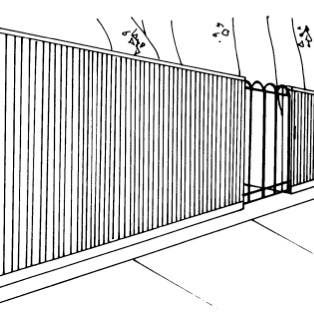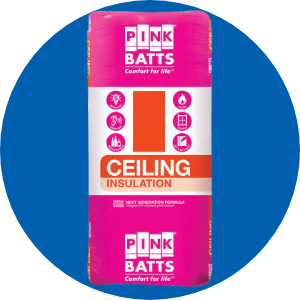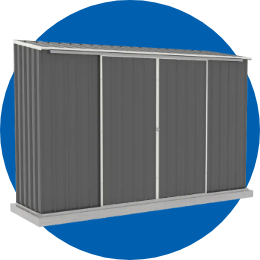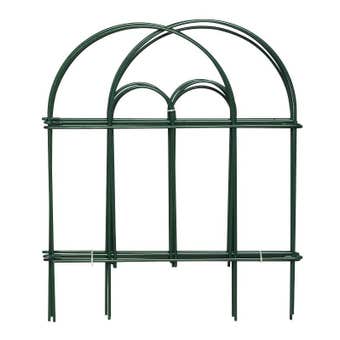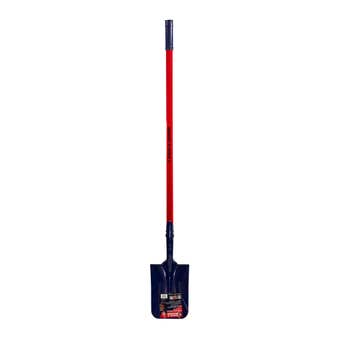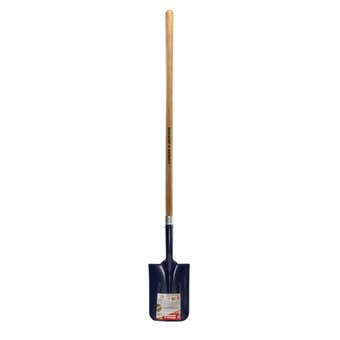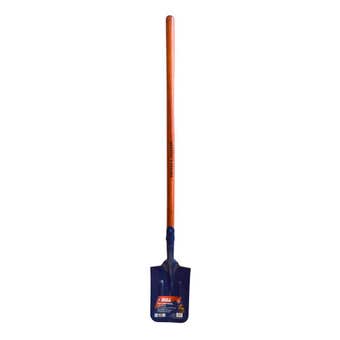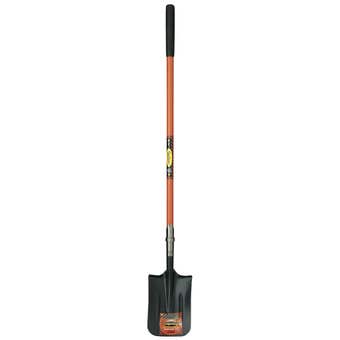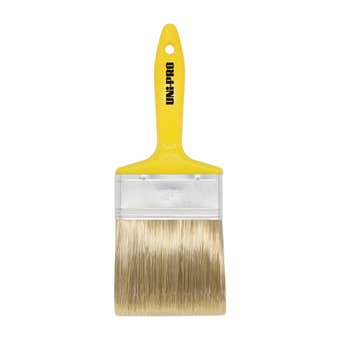- 1 March 2021
Build a fence in 6 easy steps
Your reasons for wanting or needing a fence depend on a number of things. You may want a little more privacy or wish to create a shelter from the wind or keep out other pets while keeping your own in. Or you may simply want to add an attractive finish your property.
Materials Checklist
- Posts Red Gum 125 x 75mm or or Treated Pine 100 x 100mm depending on type and height of fence. Be sure to allow for the part that goes in the ground (at least 600mm)
- Cross Hardwood or 75 x 50mm
- Rails Treated Pine top & bottom rails 75 x 38mm mid rail
- Palings Hardwood or 100mm and 150mm wide, Treated Pine half and half quantity
- Plinth Hardwood 150 x 25mm
HARDWARE
Step 1: Know your limits
It goes without saying that you should be completely aware of exactly what is yours before you start. If you are in any doubt about the extent of your boundaries then consult your local council – you may need the services of a licensed surveyor. Don’t rely on the accuracy of the title, as over the years previous owners may have robbed a bit here or borrowed a bit there. This also works both ways and you may find that a neighbour in the past snipped off a bit of yours. Now would be a good time to re-establish the correct boundary lines.
Step 2: Setting the posts
Your first job is to mark the line of the fence. Drive a stake into the ground at one end post position, and run a string line along the boundary the full distance; stake out the opposite end post. Then measure and stake all intermediate posts at equal distances. Posts are usually set 2m to 2.7m apart for a fence up to 1.8m high.
To make sure all the posts will be in a straight line, set both corner posts first. Dig holes 600mm deep x 300mm square. For fences higher than 1.8m, set your post about 1m into the ground. To make your job easier, consider hiring or buying an auger-type post hole digger.
Before setting the posts in the holes, place a timber sole plate in the bottom of each hole. Or a 50mm layer of concrete can be used instead of the timber sole plate. Stand the post on the sole plate. You’ll need to brace the post temporarily so it stays upright and straight. Where posts are to be set in sandy soil, special post struts may be required.
Fill the hole completely with a 50/50 mixture of soil and dry cement. Check the post with your spirit level and adjust the braces if necessary to hold it square in place. Then firm the mixture by tamping down hard. Add water to the mixture in the ground to set the cement in the soil. Above ground, slope the mixture away from the post to allow rain water to run off.
Then stretch two string lines between the two end posts to align the ones that come between. They should be set flush with the string line. Dig the holes and set each post in a mixture of soil and dry cement as you did for the corner posts.
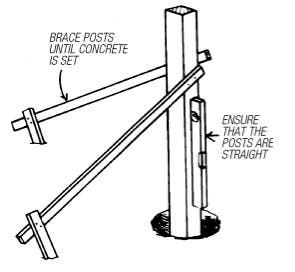

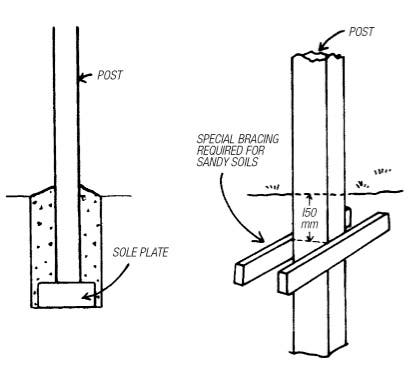

Step 3: Fixing the cross rails
The next job is to notch the posts for the rails. The top rail should be a minimum of 75mm from the top of the post’s final height.
The bottom rail is set a maximum of 175mm from the plinth, and the mid-rail centred between the two. (If you’re planning to add a cap to your completed fence, the top rail is fixed flush with the top of the post – see ‘Cappings’, Step 5). The notches are made by sawing to the depth of the rail and chiselling out the excess. They should not be deeper than the depth of the rails provide for a flush fit.
Now cut and nail on the rails on the rails using the 75 x 3.75mm galvanised bullet head nails. Joins in the rails should be butted together in the middle of a post and rail joints on posts should be staggered.
Finally, nail on the plinth at the bottom of the posts, just keeping clear of the earth. Use your string line to make sure the plinth is straight. The palings rest on top of it and if it’s not straight, your palings will be crooked.
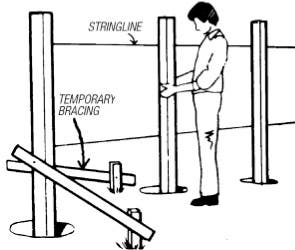

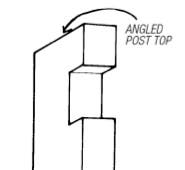

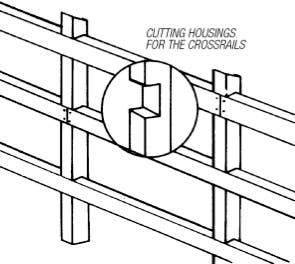

Step 4: Now come the pailings
Overlapping your palings makes for a private, more attractive fence than simply butting them together. First, nail on the 150mm palings using the 40 x 2mm galvanised nails, leaving a 50mm space in between each paling. Keep the palings vertical as you go – check regularly with your spirit level. Then nail the 100mm palings over the spaces so they overlap 25mm on both sides using the 50 x 2.8mm galvanised nails. Drive these nails in so that they don’t go through the I50mm palings. This allows for the palings to shrink without splitting.
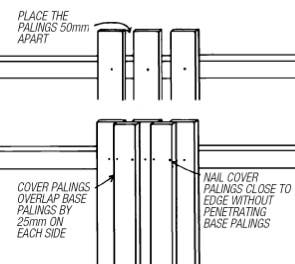

Step 5: Topping off your fence
Saw off the tops of the palings in a straight line 200mm above the top of the upper rail. This job is obviously easier with a power saw. A wooden straightedge, such as a batten, nailed on the back of your fence along the line to be cut makes a useful guide for sawing. The posts should be cut to the same height or just below the top of the palings. Make sure you cut at an angle for water to run off and to prevent rot.
Cappings
An alternative to straight cutting is capping your new fence. This will extend the life of the palings and give a more professional overall effect. In this case, your top rails must be fixed flush with the top of the post and palings flush with the top rail.
Choose an angled capping that will shed water and completely covers the exposed ends of the palings. Fix using one 75mm galvanised nail every 600mm.
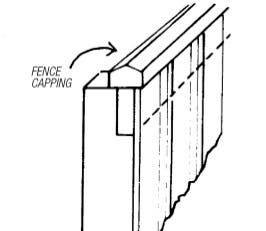

Step 6: Finishing off
This is best done about three months after the fence has been completed to allow for normal timber shrinkage. However, if you have used seasoned, treated radiata pine you may apply stains and paints almost immediately. Finishing your fence is a great job for the kids. It should keep them out of mischief for a couple of hours and earn them some extra pocket money. Ask at your Mitre I0 paint department for advice on which water-repellent stain or paint is best for your needs.
Be designing
There are many types of fence styles. The one you build should complement both the character of your home and its environment. Here are just a few ideas to get you thinking.
Picket Fence
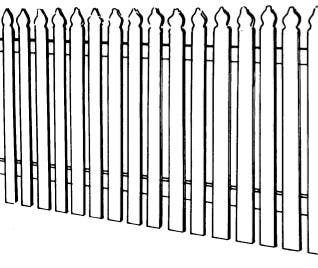

Plush Panel Capping Fence
